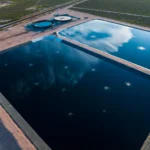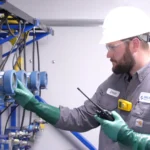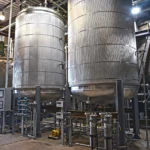Houston, TX – Select Energy Services announced today a new specialized and engineered design that allows ventless (or “green”) flowback operations to achieve increased flow rates of up to 500 barrels per hour (BPH). Select is a seasoned partner in EPA emission regulations and this capability will enable operators to achieve higher production rates while maintaining strict adherence to safety standards and regulatory guidelines applicable to ventless completions.
“In some cases, ventless flowback operations were a choke point for production. You couldn’t move fluids fast enough to keep up with customer demands in a sustainable way,” said Cole Hairston, Vice President of Well Testing for Select Energy Services. “The ability to provide higher flow rates utilizing ventless operations is a pivotal offering pursued by the Select Well Testing group.”
Select’s green completions offering is set up to recover gas emissions post-wellhead to re-deploy the gas into a pipeline or redirect the gas for destruction on-site at higher than 99.9% efficiency, all while separating the gas and fluid streams for accurate reporting. The design includes specially fitted vapor recovery tanks, state-of-the-art combustor technology with burn efficiency data capture, tank level monitoring, and ventless control actuators.
“We’ve been performing ventless operations for our customers for over six years. The limited flow rate we experienced in the past was a technical hurdle, and solving that problem is where Select’s experience really came into play,” said Steve Smith, President of Well Testing for Select Energy Services. “We currently offer ventless flowback operations in just about every major U.S. shale play and will continue to dedicate our time, resources and capital to developing these solutions.” Select’s Flowback and Well Testing team is currently deploying this solution to meet the various regulatory requirements across the U.S. and the environmental goals of customers while also satisfying the need for improved operational efficiency.









